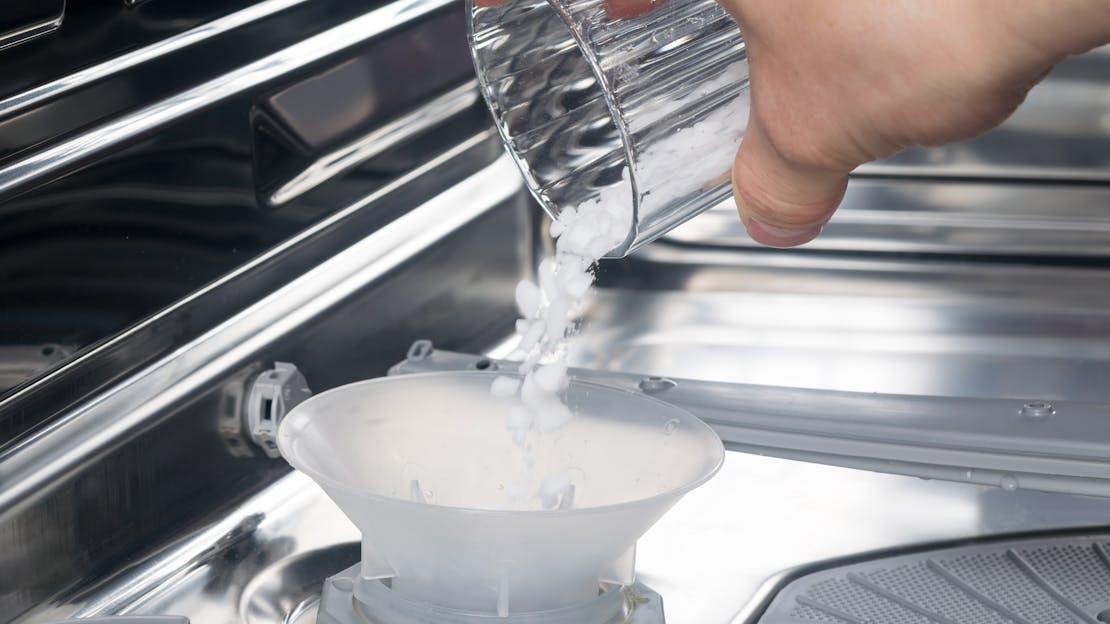
The Ultimate Buying Guide for Dishwashers
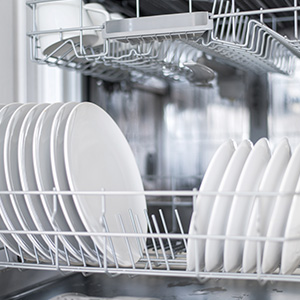
In kitchens across the UK, whether you're fortunate to have a dishwasher or not, a silent hero stands ready to tackle the daily aftermath of culinary adventures—the dishwasher. This modern marvel simplifies our lives, ensuring sparkling cutlery, gleaming glasses, and pristine plates for our dining tables. In this guide, we explore dishwasher types, features, and their indispensable role in transforming dishwashing into a breeze. Whether you're a kitchen pro or newcomer, you'll discover the perfect dishwasher for your needs, eco-friendly options, and efficiency tips. By the end, you'll appreciate the convenience and make an informed choice for your British kitchen's new best friend. Welcome to the world of dishwashers.
What are the different types of dishwashers?
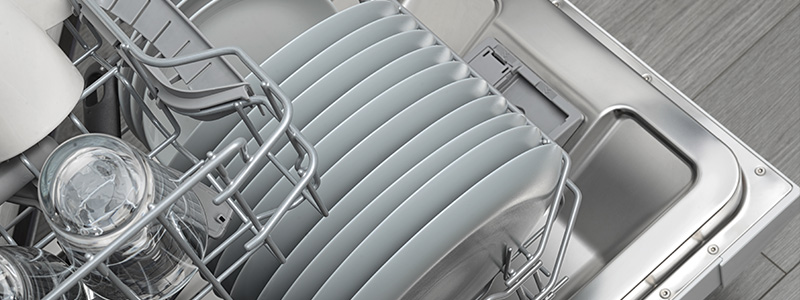
When it comes to selecting the right dishwasher for your kitchen, you'll come across various types to consider.
Integrated dishwashers
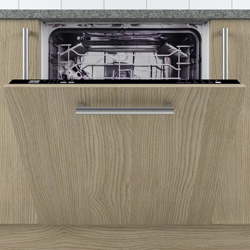
If you're looking for a dishwasher that seamlessly integrates with your kitchen's aesthetics, consider an integrated dishwasher. Also known as built-in or panel-ready dishwashers, these appliances feature a front panel that matches your cabinetry, ensuring a cohesive and sophisticated appearance. However, keep in mind that integrated dishwashers may require professional installation for that seamless look.
Slimline dishwashers
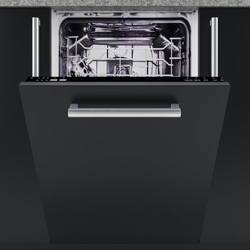
Next, slimline dishwashers are designed to save space while maintaining functionality. These models are narrower in width, typically measuring 45 centimetres (cm) across. Slimline dishwashers are perfect for kitchens with limited space, offering a reduced capacity compared to standard models but still providing the convenience and efficiency you need for your dishwashing needs.
Freestanding dishwashers
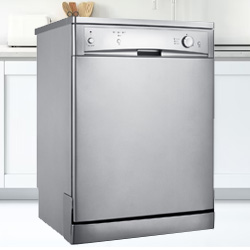
Next, there's the freestanding dishwasher, a versatile option that can be placed anywhere in your kitchen as long as it has access to a water source and drain. Freestanding dishwashers come in different sizes and styles to match your kitchen décor, offering both convenience and flexibility in placement.
Table top dishwashers
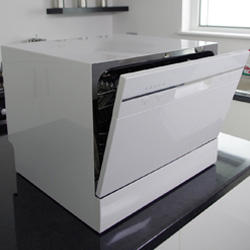
Lastly, for those dealing with limited kitchen space, table top dishwashers offer a compact and portable solution. These small yet efficient appliances sit on your countertop or a stable surface and are particularly suitable for small kitchens or flats. Although table top dishwashers have a smaller capacity compared to standard models, they are a convenient choice for individuals or small households.
What’s the difference between a slimline and a full size dishwasher?
In terms of capacity, full-size dishwashers excel due to their larger size. They can accommodate a greater number of dishes, glasses, and utensils in a single wash cycle, making them a preferred choice for larger households or families with substantial dishwashing needs. Slimline dishwashers, though still capable of handling a respectable quantity of dishes, have a smaller capacity relative to their full-size counterparts. Consequently, they are better suited for smaller households or kitchens where space is limited.
Space considerations are another crucial factor. Slimline dishwashers are specifically designed for kitchens with restricted space, making them an excellent fit for small kitchens, apartments, or narrow layouts where fitting a full-size dishwasher can be challenging. Full-size dishwashers, by contrast, require more floor space in the kitchen and may not be suitable for compact kitchen designs.
Lastly, there's a difference in energy and water usage. Full-size dishwashers tend to consume more water and energy per cycle due to their larger capacity. On the other hand, slimline dishwashers, being smaller in size, may use slightly less water and energy per load. However, the exact energy and water efficiency can vary depending on the specific models and their energy ratings.
In summary, the choice between a slimline and a full-size dishwasher hinges on factors such as kitchen size, household size, and dishwashing requirements. While full-size dishwashers excel in capacity, slimline dishwashers are designed to save space and are more suitable for smaller kitchens or locations with limited available space.
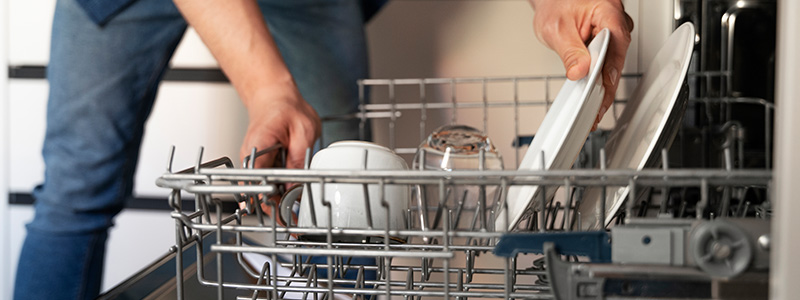
What different sizes of dishwashers are available?
Dishwashers are available in a range of sizes to cater to different kitchen layouts and household needs.
Dishwasher width
The standard full-size dishwasher models are typically designed with a width of around 60 centimetres (cm), providing ample space for cleaning a substantial number of dishes in one go. However, if your kitchen space is limited, or if you're looking for a more space-efficient solution, you may want to consider slimline designs or table top dishwashers as viable alternatives.
Full-size dishwashers, with their 60cm width, are a dependable choice for households with a considerable volume of dishes to clean. They offer the convenience of accommodating larger pots and pans, as well as a generous quantity of plates, glasses, and utensils. This makes them particularly well-suited for families or those who frequently entertain guests, as they can efficiently handle sizable dishwashing loads.
On the other hand, slimline dishwashers provide a space-saving alternative for kitchens where every inch of space counts. These dishwashers typically have a more compact width, around 45 cm, making them a perfect fit for smaller kitchens, apartments, or any setting where space is at a premium. While they have a reduced capacity compared to full-size models, slimline dishwashers still offer a practical and efficient solution for daily dishwashing needs, making them an ideal choice for couples or individuals.
If space is an even greater concern, table top dishwashers offer the ultimate in compactness and portability. These miniature marvels can be placed on a countertop or a stable surface, requiring minimal installation effort. Table top dishwashers are especially useful for tiny kitchens or studio apartments, where full-size or slimline models might be impractical. While they have a smaller capacity compared to larger dishwashers, table top models are perfect for single individuals or small households with limited dishwashing requirements.
In summary, when selecting a dishwasher, it's essential to consider the available space in your kitchen, the volume of dishes you need to clean regularly, and your specific household needs. The choice between full-size, slimline, or table top dishwashers ultimately depends on these factors, ensuring that you find the perfect fit for your kitchen and lifestyle.
Dishwasher Capacity

Dishwasher capacity is typically measured in place settings, with a "place setting" representing the standard arrangement of dishes and utensils used by one person during a meal. This typically includes a dinner plate, a salad plate, a bowl, a glass, a cup and saucer, flatware (knife, fork, and spoon), and additional utensils like a dessert fork and knife.
Here's how dishwasher capacity and place settings are measured:
Standard Place Settings: A standard full-size dishwasher is designed to accommodate a specific number of standard place settings, usually around 12 to 14. This means it can clean the dishes and utensils used by 12 or 14 people in a single wash cycle.
Adjustable Racks: Dishwashers often feature racks and shelves that can be adjusted to fit dishes of various sizes and shapes. This flexibility can influence the total number of place settings a dishwasher can hold.
Size and Configuration: Dishwashers are available in different sizes and configurations. Smaller slimline dishwashers may have a capacity of 8 to 10 place settings, while larger models can handle up to 16 or more place settings.
Cutlery and Utensil Storage: Some dishwashers offer specialised cutlery trays or baskets that can impact overall capacity. These trays can free up space in the main rack for additional dishes.
Additional Features: High-end dishwashers may include features like adjustable tines, fold-down shelves, and extra spray arms that can optimise space and potentially increase capacity.
When considering dishwasher capacity, it's important to bear in mind that the actual number of dishes and utensils you can fit may vary depending on their size and shape. Overloading a dishwasher can lead to less effective cleaning, so arranging dishes properly is essential to ensure a thorough wash.
In summary, dishwasher capacity is primarily measured in terms of place settings, with standard full-size models typically accommodating around 12 to 14 place settings. However, factors such as adjustable racks and specialised features can influence how effectively the space is used and the number of dishes a dishwasher can hold.
Dishwasher key features and settings explained:
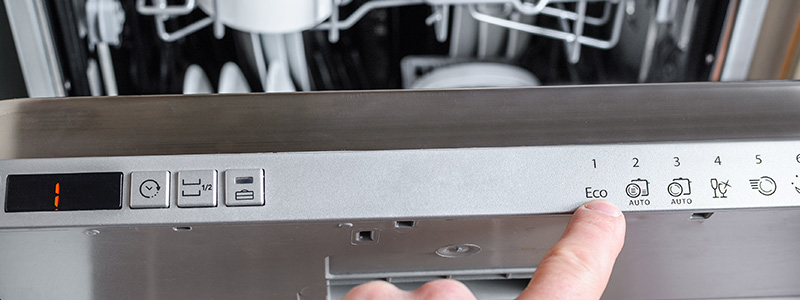
Dishwashers are equipped with a range of features and settings designed to enhance their performance and adapt to different washing needs. Here are some key features and settings typically found on dishwashers:
Wash Cycles: Dishwashers offer multiple wash cycles, including options like Normal, Heavy-Duty, Quick Wash, Eco, and Delicate. Each cycle is tailored for specific types of loads. Normal cycles are suitable for everyday dishes, while Heavy-Duty cycles are designed for heavily soiled pots and pans. Quick Wash is for lighter loads, Eco is an energy-saving option, and Delicate cycles are gentler for fragile items.
Temperature Settings: Some dishwashers allow you to adjust the wash water temperature. Higher temperatures are more effective at removing tough stains and sanitising, while lower temperatures are energy-efficient for less soiled dishes.
Drying Options: Dishwashers typically offer two drying methods: heated drying and air drying. Heated drying uses a heating element to speed up the drying process, while air drying relies on natural air circulation. Some models even have a fan-assisted drying option for improved drying performance.
Delay Start: This feature allows you to programme your dishwasher to start at a later time, making it possible to take advantage of off-peak energy hours or have your dishes ready when you return home.
Half-Load Option: If you have a smaller load of dishes, you can select the half-load option to reduce water and energy consumption.
Rack Configuration: Dishwashers have adjustable racks to accommodate various dish sizes and shapes. Some models feature fold-down tines, adjustable shelves, and specialised racks for items like wine glasses and utensils.
Soil Sensors: Modern dishwashers often come with soil sensors that detect the level of dirtiness in your dishes and adjust the wash cycle accordingly. This helps save water and energy by avoiding over washing.
Sanitising or Extra Rinse: Some dishwashers offer a sanitising feature that uses higher water temperatures to kill bacteria and ensure dishes are hygienically clean. An extra rinse option is also available for additional rinsing.
Child Lock: This safety feature prevents children from accidentally opening the dishwasher during a cycle or changing the settings.
Smart Features: Some high-end dishwashers are equipped with smart technology, enabling you to control and monitor your dishwasher remotely through a smartphone app. You can also receive alerts when the cycle is complete or when you need to add dishwasher detergent.
Hard Water Treatment: In areas with hard water, dishwashers may include water softening features to prevent mineral build-up on dishes and the dishwasher's interior.
Quiet Operation: Many dishwashers come with noise-reduction features, making them quieter during operation. This is particularly important in open-plan kitchens.
Filter Systems: Dishwashers have filters to trap food particles and debris. Some models have self-cleaning filters, while others require manual cleaning.
Adjustable Water Pressure: Dishwashers can adjust the water pressure for different parts of the wash cycle, ensuring efficient cleaning while conserving water.
Self-Cleaning Feature: Some dishwashers have a self-cleaning cycle that helps remove residue and odours from the dishwasher's interior.
These features and settings can vary depending on the dishwasher model and brand, so it's essential to consult the user manual and familiarise yourself with your specific dishwasher's capabilities to achieve the best results and energy efficiency.
Are dishwashers more efficient than washing up

Yes, dishwashers are generally more efficient than washing up by hand in terms of water usage, energy consumption, and even cleanliness. Here are a few reasons why dishwashers are considered more efficient:
Water Conservation: Dishwashers are designed to use a specific amount of water for each cycle, and they recycle and filter this water efficiently. Washing dishes by hand often involves continuously running the tap, which can result in significant water wastage.
Energy Efficiency: Dishwashers are engineered to heat water to the optimal temperature for efficient cleaning, usually around 60-65°C. Hand washing often requires using hot water from the tap, which can be less energy-efficient, especially if the water heater is far from the sink.
Consistent Cleaning: Dishwashers use powerful jets and spray arms to ensure consistent and thorough cleaning of dishes, including hard-to-reach areas. Hand washing may not achieve the same level of cleanliness, and it's easier to miss spots or leave residues.
Sanitisation: Dishwashers can reach high temperatures during the drying phase, effectively sanitising your dishes and killing most bacteria and germs. Hand washing with hot water may not achieve the same level of sanitisation.
Time Efficiency: Using a dishwasher saves you time and effort. You can load it, press a button, and let it do the work while you attend to other tasks. Hand washing, on the other hand, can be more time-consuming.
Water Temperature Control: Dishwashers are equipped with thermostats to ensure the water reaches the right temperature for cleaning. Hand washing may involve guessing or inconsistent temperature control.
It's worth noting that the efficiency of a dishwasher depends on various factors, including the dishwasher's age and energy efficiency rating, how full it is, and the settings you use. However, in most cases, modern dishwashers are designed to be environmentally friendly and cost-effective compared to washing dishes by hand, especially when used efficiently.
How to care for your dishwasher

Dishwashers are hardworking kitchen appliance that deserves a little TLC to keep it running smoothly. Proper care not only extends its lifespan but also ensures consistently clean and sanitary dishes. Here's a general guide on how to care for your dishwasher, covering daily maintenance, dishwasher cleaning, and loading tips:
Loading a dishwasher:
Properly Arrange Dishes: Load dishes with the soiled side facing the spray arms. Plates should go on the bottom rack, with larger items like pots and pans along the sides. Glasses, cups, and smaller items should go on the top rack.
Avoid Overcrowding: Ensure there's enough space between items for water and detergent to circulate. Overcrowding can lead to inefficient cleaning.
Secure Utensils: Place utensils with handles down to prevent water spray from getting trapped. Use the utensil basket or rack to keep them separated.
Be Mindful of Dishwasher-Safe Items: Check labels for dishwasher-safe items. Delicate or non-dishwasher-safe items should be hand-washed to prevent damage.
Daily maintenance for a dishwasher:
Scrape Food Residue: Before loading your dishes, scrape off excess food into a bin or compost. This prevents food particles from clogging the dishwasher's filters and spray arms.
Rinse Heavily Soiled Items: For dishes with stubborn or dried-on food, consider giving them a quick rinse before loading. This can prevent food debris from circulating in the dishwasher during the wash cycle.
Run Full Loads: Dishwashers are most efficient when fully loaded. Wait until you have a full load before starting a cycle to conserve water and energy.
How to clean a dishwasher:
Clean the Filter: Check your dishwasher's user manual to locate the filter. Remove it and rinse it under warm water to remove trapped debris. Depending on your dishwasher model, you may need to clean it monthly or as needed.
Wipe Down the Interior: Periodically, wipe down the interior of the dishwasher, including the door gasket and seals. Use a damp cloth or sponge to remove any residue or stains.
Clean the Spray Arms: Inspect the spray arms for clogs. Remove them if possible and rinse them under warm water. A toothpick or small brush can help dislodge any debris stuck in the spray arm nozzles.
Deodorise: To remove odours, place a dishwasher-safe cup of white vinegar on the top rack and run a hot water cycle. Alternatively, you can use a commercial dishwasher cleaner.
By following these daily maintenance routines, periodic cleaning steps, and loading guidelines, you'll keep your dishwasher in top condition and enjoy spotless dishes with every cycle. A well-maintained dishwasher not only saves you time and effort but also contributes to a more sustainable and efficient kitchen.
Why do dishwashers need salt and rinse aid?
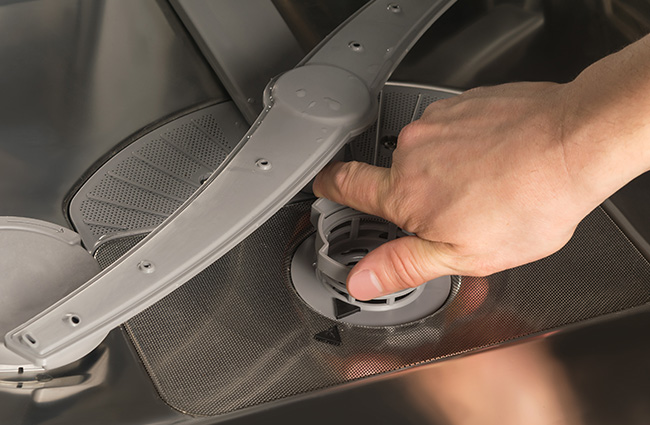
Dishwashers utilise salt and rinse aid for different purposes to enhance their overall washing and drying performance:
Salt:
- Water Softening: Dishwashers require salt primarily for water softening. In regions with hard water, characterised by a high concentration of minerals like calcium and magnesium, these minerals can accumulate in the dishwasher and on your dishes over time. Hard water can also diminish the efficacy of detergents.
- Water Softener Unit: Dishwashers equipped with an integrated water softener unit have a compartment where you can add dishwasher salt. The salt plays a crucial role in regenerating the resin beads within the water softener. These resin beads attract and eliminate the hardness minerals from the water, thereby averting limescale build-up in the dishwasher and ensuring effective cleaning.
Rinse Aid:
- Enhanced Drying: Rinse aid is employed to boost the drying performance of the dishwasher. It reduces the surface tension of water, facilitating its easy runoff from dishes and preventing the formation of water droplets on items such as dishes, glassware, and cutlery during the drying cycle.
- Spot and Streak Prevention: Rinse aid serves to prevent spots and streaks on your dishes by promoting even water flow over their surfaces, thereby reducing the likelihood of minerals and detergent residues drying onto them.
- Quicker Drying: By facilitating faster drying, rinse aid also diminishes the need for heated drying, which can be energy-intensive. This makes your dishwasher more energy-efficient.
To summarise, dishwasher salt is primarily utilised to preclude the accumulation of mineral deposits within the dishwasher and to uphold effective cleaning, particularly in areas characterised by hard water. Conversely, rinse aid is employed to elevate drying performance, avert spots and streaks on dishes, and enhance the general cleanliness of your dishware. Both salt and rinse aid contribute to the efficiency and effectiveness of your dishwasher, ensuring that your dishes emerge clean and free from unsightly spots.
Other things to consider when buying a dishwasher
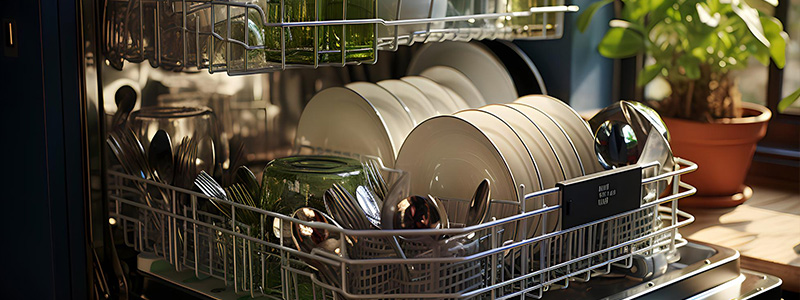
What to consider regarding warranty before buying a dishwasher
When contemplating the purchase of a dishwasher, it's essential to assess the manufacturer's warranty carefully. Take note of the warranty's duration, its scope of coverage, and any exceptions. Understand whether it encompasses both labour and replacement parts, and verify the availability of authorised service centres in your vicinity. Ensure compliance with any registration prerequisites and explore the possibility of an extended warranty if offered by the retailer. Furthermore, research the manufacturer's track record in honouring warranties and adhere to recommended maintenance guidelines to uphold the validity of the warranty, offering assurance for your dishwasher investment.
What to consider regarding installation before buying a dishwasher
Installing a dishwasher involves several critical factors to ensure a seamless integration into your kitchen. This table provides an overview of key installation considerations, offering details and recommendations for each aspect. By carefully addressing these factors, you can streamline the installation process and optimize your dishwasher's functionality within your kitchen space.
| Installation Considerations | Details and Recommendations |
|---|---|
| Space and Size | Measure available space (height, width, depth) to ensure a proper fit. Choose a dishwasher size that matches your kitchen layout. |
| Water and Drainage Connections | Verify the presence and proximity of water inlet and drainage outlets meeting local plumbing codes. |
| Electrical Requirements | Check for a nearby electrical outlet that meets the dishwasher's voltage and power requirements or prepare for installation. |
| Ventilation | Ensure proper ventilation to disperse heat and steam generated during operation, preventing moisture build-up in your kitchen. |
| Cabinet Modification | Be prepared to adjust cabinet dimensions (height, width, depth) to accommodate the dishwasher, especially if replacing or installing for the first time. |
| Professional Installation | Consider hiring a professional technician for installation, particularly if you're uncertain about plumbing and electrical work. |
| Integrated or Freestanding | Decide between an integrated (built-in) or freestanding dishwasher based on your kitchen aesthetics and installation preferences. |
| Floor Protection | Install a waterproof, heat-resistant mat or barrier under the dishwasher to safeguard your kitchen floor from potential leaks or condensation. |
| User Accessibility | Ensure convenient placement for easy loading and unloading, minimizing discomfort or strain during daily use. |
In conclusion
In summary, the process of selecting the right dishwasher for your needs requires careful consideration of various factors, ranging from size and capacity to features and installation requirements. By taking the time to evaluate your specific needs, prioritising energy efficiency, and weighing the benefits of different dishwasher types, you can make an informed decision that aligns with your lifestyle and kitchen layout.
It's important to remember that regular maintenance and proper usage are essential for keeping your dishwasher running efficiently and prolonging its lifespan. Furthermore, do not underestimate the significance of a dependable warranty and professional installation to ensure a trouble-free ownership experience.
We trust that this guide has provided you with valuable insights and guidance to aid you in your journey to purchase a dishwasher. Whether your aim is to save time on daily chores, conserve water and energy, or enhance the overall aesthetics of your kitchen, a well-chosen dishwasher can be a valuable addition to your home. Embrace the convenience and efficiency that a high-quality dishwasher brings to your daily routine!
Top Selling Integrated Dishwashers from MyAppliances
Explore our sleek integrated dishwashers, delivering exceptional cleaning performance and seamless design integration. With advanced technology and customisable settings, dishwashing becomes effortless. Upgrade your kitchen with our integrated dishwashers today.
More washing guides and advice
More washing guides and advice
Modern dishwashers come equipped with various functions and features to ensure efficient and effective cleaning. In this guide we cover the most common functions found on most dishwashers.
Dishwasher salt, also known as water softener salt or dishwasher water softener salt, is a type of salt specifically used in dishwashers. It is not the same as table salt, which is used for seasoning food. Dishwasher salt is a special type of coarse-grained salt that is used to regenerate the ion exchange resin in the water softener of a dishwasher.
Cleaning your washing machine is essential to ensure it operates efficiently and to prevent the build-up of mould, mildew, and unpleasant odours. Here's our step-by-step guide on how to clean your washing machine.


